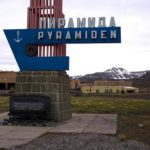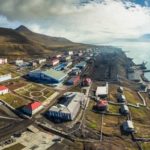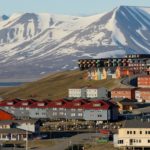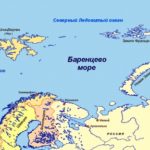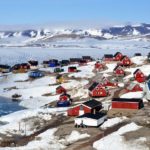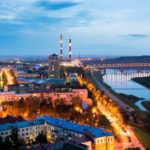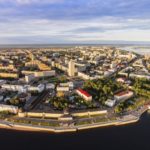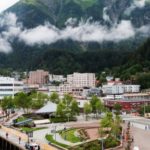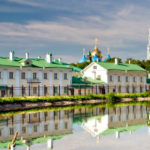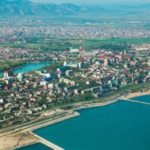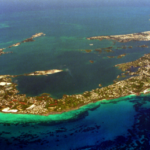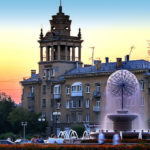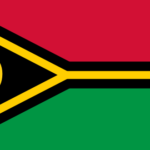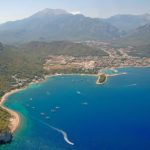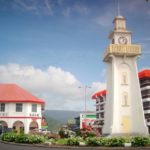Barentsburg
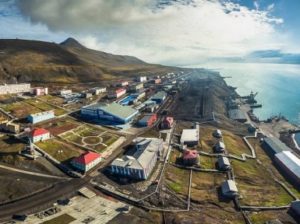 Barentsburg is a Russian mining town located on the West Svalbard island of the Norwegian Svalbard archipelago. Founded in 1920, rebuilt after the Second World War in the 50s of the last century. Barentsburg includes the Barentsburg mine and a residential town for 2,000 inhabitants. It is Russian possession on the basis of the Svalbard treatise of 1920. Currently, according to reported data, 573 people live in Barentsburg.
Barentsburg is a Russian mining town located on the West Svalbard island of the Norwegian Svalbard archipelago. Founded in 1920, rebuilt after the Second World War in the 50s of the last century. Barentsburg includes the Barentsburg mine and a residential town for 2,000 inhabitants. It is Russian possession on the basis of the Svalbard treatise of 1920. Currently, according to reported data, 573 people live in Barentsburg.
Barentsburg is a Russian mining village on the Norwegian Svalbard archipelago. How can this be? It turns out maybe. And if you carefully familiarize yourself with the history of this village, it becomes clear why the Russians were there and why they still do not leave there, although a little more than 500 people live there.
Barentsburg arose at the beginning of the 20th century, when coal deposits were discovered on Svalbard. At that time, coal was the main fuel for domestic needs and for vehicles: steam locomotives, steamboats and warships. Therefore, it is not surprising that European coal mining companies, including the Russian De russiske kullfeller Green Harbor, began mining coal on Spitsbergen. However, the First World War, and then the revolution, did not allow Russian industrialists to turn around and in 1920 the Russian explored area with large coal deposits in Gladdalen was sold to the Dutch company Nederlandsche Spitsbergen Compagnie.
The company built the village and the first mine. The village was named Barentsburg, in honor of the famous navigator Willem Barents, who opened Spitsbergen in 1596. The Dutch invested quite a lot of money and quickly launched coal mining, coal was shipped to the mainland, fueling of ships was organized, the business flourished. But after 6 years, in Europe, coal prices fell, and the hype subsided, coal production declined, and then completely stopped, Barentsburg was empty.
The Russians returned to Svalbard in 1932, when the USSR joined the Svalbard Treaty of 1920, at the same time the Arktikugol Trust was created, which bought the field along with the village, mine and available equipment. Since then, life in Barentsburg has begun to boil. The village was upset, coal production was growing, coal was shipped to the mainland and sold for currency to Europe.
However, the Second World War changed everything drastically. Taking into account the geographical location of the archipelago, the Germans immediately after the outbreak of war equipped weather stations on Svalbard, providing weather reports to the German fleet and aviation, and then decided to occupy the islands of the archipelago, as a convenient springboard for the North.
So that the Germans would not get large reserves of coal, and they could not continue its extraction, Norway decided to destroy everything on the islands. All coal reserves were burned, mines destroyed, the population evacuated. A small garrison remained in Barentsburg, from where Norwegian units could control the situation on the archipelago, identify and destroy German weather operations groups, and prevent the invaders from landing. To end this, in 1943 the Germans conducted an operation codenamed Citronella, during which two battleships Scharnhorst and Tirpitz and 9 destroyers entered Grenfjord and rained Barentsburg with artillery fire. The landing party after shelling destroyed all living things. Barentsburg has ceased to exist. German soldiers killed and took pictures with their trophies for the sake of fun.
After the war, it took several years to restore the blown up mines and rebuild the mining towns. The Soviet Union re-built three mines: “Barentsburg”, “Grumant” and “Pyramid”, and in order not to face the Europeans in the mud, exemplary towns with all the infrastructure. During the 50s of the last century, the mine in the Arctic Barentsburg was equipped with the most modern equipment at that time. A cinema, a canteen, a school, a hospital, a kindergarten, and sports halls appeared in Barenburg. The town had its own greenhouse and farm, which provided miners and their families with fresh produce. The working miners were provided with free housing and meals, had the highest earnings and a two-month vacation with free travel. In short, they lived as under communism. To get to work in this remote town was the dream of any miner, but not everyone was taken, but only the best.
Conducted in 1981 by re-exploration of deposits, coal deposits in Svalbard were estimated at more than 10 billion tons. Coal mining was carried out only by Norwegians and Russians, using mechanization and automation; more than 300 thousand tons of coal were mined annually on Svalbard. The population of Barentsburg reached 2000 people.
